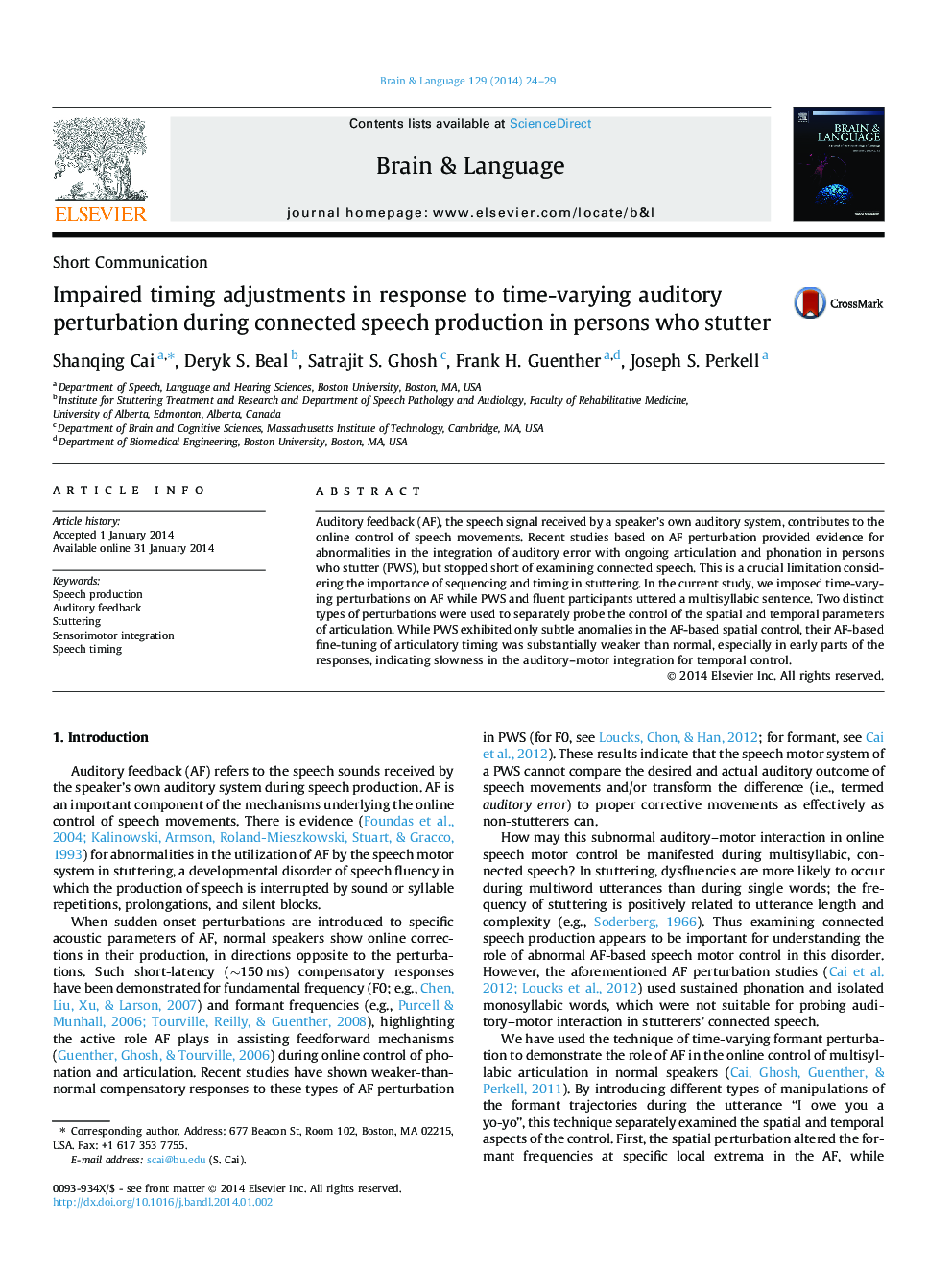| Article ID | Journal | Published Year | Pages | File Type |
|---|---|---|---|---|
| 925318 | Brain and Language | 2014 | 6 Pages |
•We focused on auditory-motor interaction during fluent connected speech in stuttering.•Two types of time-varying perturbation probed spatial and temporal control separately.•The online control of spatial parameters of articulation is largely normal in stutterers.•However, the online control of articulatory timing is weaker-than-normal in stutterers.
Auditory feedback (AF), the speech signal received by a speaker’s own auditory system, contributes to the online control of speech movements. Recent studies based on AF perturbation provided evidence for abnormalities in the integration of auditory error with ongoing articulation and phonation in persons who stutter (PWS), but stopped short of examining connected speech. This is a crucial limitation considering the importance of sequencing and timing in stuttering. In the current study, we imposed time-varying perturbations on AF while PWS and fluent participants uttered a multisyllabic sentence. Two distinct types of perturbations were used to separately probe the control of the spatial and temporal parameters of articulation. While PWS exhibited only subtle anomalies in the AF-based spatial control, their AF-based fine-tuning of articulatory timing was substantially weaker than normal, especially in early parts of the responses, indicating slowness in the auditory–motor integration for temporal control.
